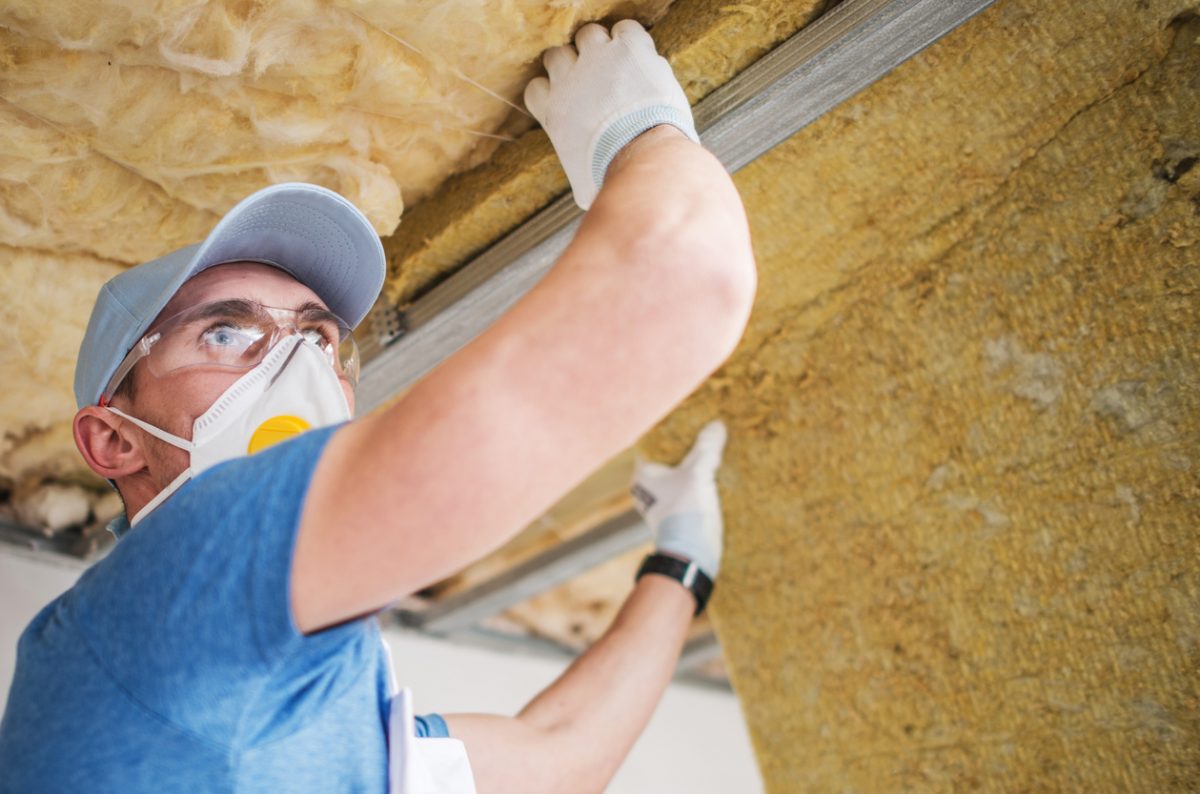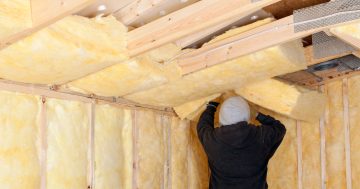
Up to 35 per cent of heat is lost through the ceiling over the colder months in an uninsulated house. Photo: File.
A new regulation requiring landlords to install insulation in their rental properties will be a lifesaver in Canberra’s bitter winters, according to a tenant advocate.
The ACT Government’s new minimum energy efficiency standard for ACT rental properties will be phased in from April next year so tenants will be more comfortable and healthy in Canberra’s weather extremes.
The phase-in period will last until 30 November 2026, but landlords will be required to meet the standard within nine months of a new lease being signed for the property.
From 1 December 2026, properties will need to comply or be in the process of complying, regardless of whether a new lease has been signed, and new properties entering the rental market will have three months to comply with the standard.
Rental homes without ceiling insulation or with insulation rated less than R2 will require new insulation to be installed or upgraded to R5, the level typically used in new builds.
The government says that from 1 April 2023, it will also be mandatory for landlords to say whether their property meets the minimum standard in all advertisements and new residential tenancy agreements.
Better Renting executive director Joel Dignam said the new regulation was a positive first step towards ensuring healthy homes for people renting in the ACT. He said it would make a big difference for many people renting in the ACT.
“It’s literally going to save lives in cold winters, and with the energy crisis, it’s going to help with energy costs,” he said.
Mr Dignam said sealing homes properly to keep out draughts, proper window treatments and moving to energy-efficient appliances, particularly switching to electric reverse-cycle systems from inefficient gas heaters, should also be on the table.
Landlords will be assisted in upgrading their properties through an expanded Sustainable Household Scheme which will make insulation an eligible product and offer zero-interest loans of up to $15,000 to cover the cost of installation.
But the Real Estate Institute Institute of the ACT has previously expressed concerns that some landlords will sell their properties rather than pay to upgrade them or increase rents to cover the cost, worsening Canberra’s already parlous rental market.
REIACT’s Alex Scott said this would be another impost on landlords that could drive investors out of the market.
“The impacts are potentially taking more properties off the market and rents increasing as a result of less supply and more financial demands on owners that they will try to recover,” she said.
Ms Scott said there were also a number of unknowns the industry would have to deal with.
“Part of the difficulty will be fulfilling the obligation to have the property insulated to the capacity that’s required in the timeframe,” she said.
“Who will determine whether or not it is required? Industry is not qualified to do that. Do we have enough trades to do it? What will the impositions be on the owners? Does the property need to sit vacant until such time it becomes compliant.
“There’s just a lot of balls in the air.”
Mr Dignam said it was unclear what impact the new regulation would have on the market.
He said if a landlord did decide to sell, the home would remain in the housing supply either as a rental home or owner-occupied, which would probably mean one less rental household.
“There’s going to be a period of transition, but we need a rental sector where landlords are going to have the responsibility to provide a decent home, and people who don’t want to meet that responsibility shouldn’t be in this game,” he said.
The ACT Government says more than 60 per cent of rental homes already comply with the standard.
Mr Dignam welcomed news the government will monitor and evaluate the implementation of the new standard.
“We hope that landlords will comply with these new requirements without renters having to go to the ends of the earth to enforce their rights. If not, it may be necessary for the government to take a more hands-on role in ensuring compliance,” he said.
Chief Minister and Minister for Climate Action Andrew Barr said the new standard would improve the well-being of Canberra renters, as well as help reduce their cost of living.
“We know that upgrades like these can be costly, which is why we have programs such as the Sustainable Household Scheme in place to help reduce those costs,” he said.
“Getting landlords on board is another big step towards ensuring all Canberrans benefit from a zero-emissions future for the ACT.”
Minister for Energy and Emissions Reduction Shane Rattenbury said insulation was the most effective and efficient way to quickly improve energy efficiency in rental properties.
“Many renters in the ACT live in housing that is not well insulated and this impacts their health, comfort and happiness at home. It’s unfair that those with the least capacity to pay often live in properties that are the most expensive to heat and cool,” he said.
“Up to 35 per cent of heat is lost through the ceiling over the colder months in an uninsulated Canberra house.”
Mr Rattenbury said the phase-in period and no-interest loans would assist rental providers in satisfying the new requirements in a balanced way.
The government would also invest in public housing energy efficiency improvements, including replacing gas appliances such as hot water and heating and cooling systems with energy-efficient electric alternatives that were cheaper to run and support the ACT’s transition from gas by 2045.
Mr Rattenbury said government would continue to examine other energy efficiency measures that could be implemented in future years.




















